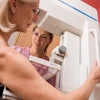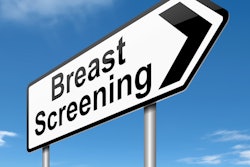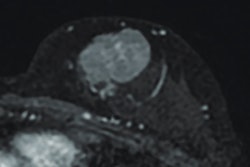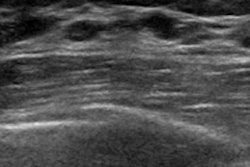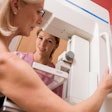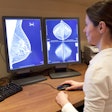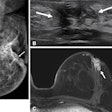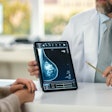Mammography may have a diagnostic role in evaluating pregnancy-associated breast cancer, researchers have found.
Mammography found about four out of five of these breast cancers and shows calcifications in more than half of pregnancy-associated breast cancer cases, wrote a team led by Noam Nissan, MD, PhD, from the Memorial Sloan Kettering Cancer Center in New York. The results were published July 31 in Clinical Imaging.
"Despite the high proportions of increased mammographic density, mammography successfully demonstrated most pregnancy-associated breast cancers and frequently provided valuable additional information for their evaluation," the Nissan team wrote.
Pregnancy-associated breast cancer is uncommon, occurring in about one in 3,000 pregnancies. However, previous reports suggest that incidence rate is rising in developed countries due to the trend of delayed childbirth. Radiological diagnosis can be challenging due to physiologic changes in breast tissue that pregnant women experience, which can mask abnormalities.
Ultrasound is the go-to modality for these cases, but the researchers noted that mammography’s role in this area remains unclear due to the increased fibroglandular tissue during pregnancy and lactation.
Nissan and colleagues implemented a mammography strategy at their institution, evaluating its role in the diagnostic workup of pregnancy-associated breast cancer.
Final analysis included data from 167 women with newly diagnosed pregnancy-associated breast cancer and an average age of 37 years. The women were diagnosed between 2009 and 2024. Of the total, 30 women were pregnant and 137 were lactating at the time they were diagnosed. In the study, 163 women (97.6%) had dense breasts and 135 (80.8%) had extremely dense breasts.
Mammography showed 137 (82%) of the total pregnancy-associated breast cancers. This also included 21 cases where mammography was the only detection method, 17 cases that had additional positive stereotactic biopsy, 35 cases that showed changes in lesion size by ≥1 cm (p < 0.001), and 35 cases where T-staging was changed.
And compared with ultrasound alone, excluding cases with duplicate contributions, mammography added value in 64 patients (38.3%).
The study authors highlighted that, however these cancers present, mammography and ultrasound "must serve as complementary tools in the diagnostic evaluation of pregnancy-associated breast cancers." They also stressed that there are safety concerns regarding the use of mammography in this population.
"Mammography is considered safe when clinically indicated, as the fetal radiation dose from a standard four-view mammogram is extremely low, typically counting for less than 0.03 mGy, and well below the threshold associated with deterministic effects such as teratogenesis, which require exposures of at least 50 mGy," the authors wrote.
The full study can be accessed here.

